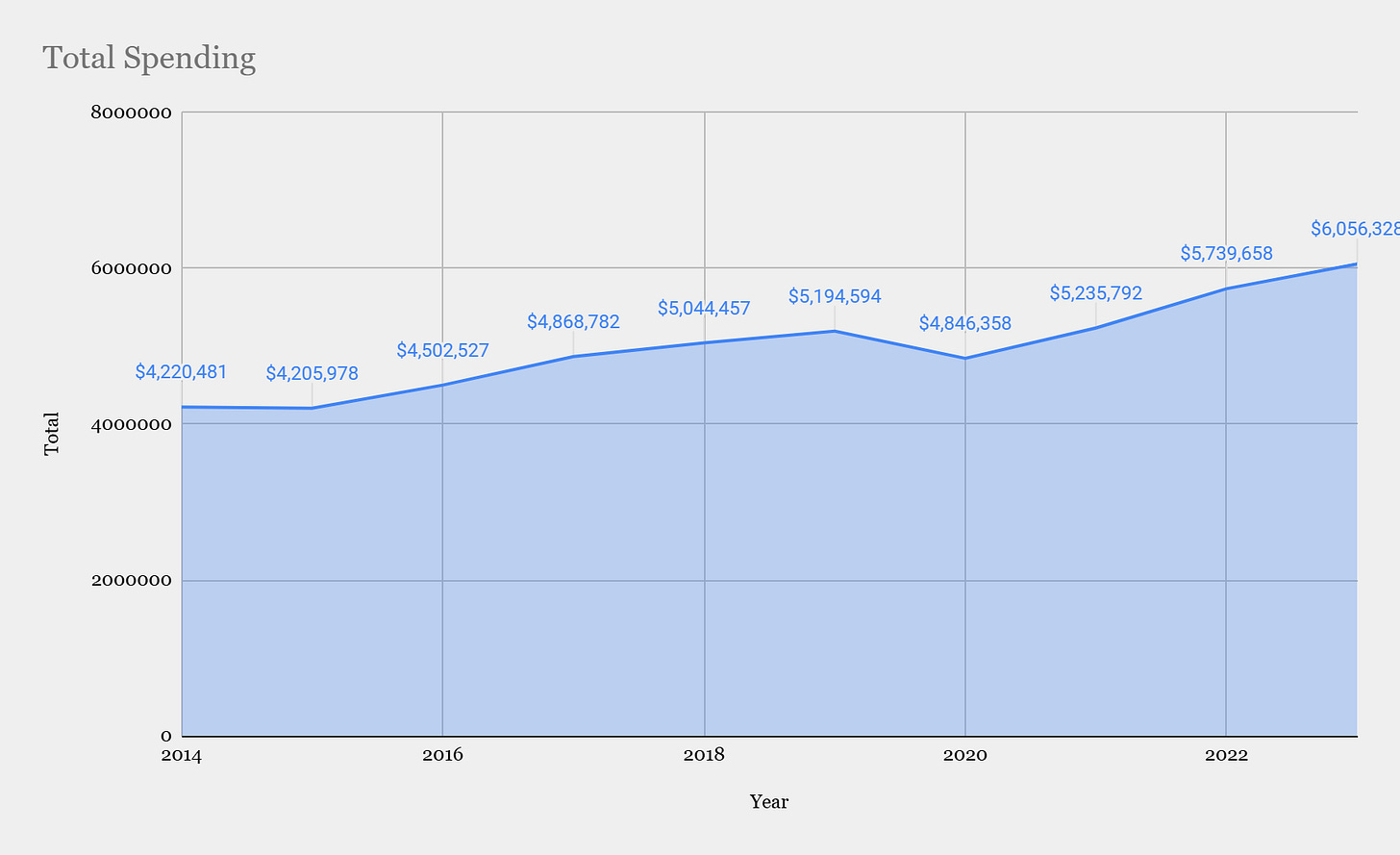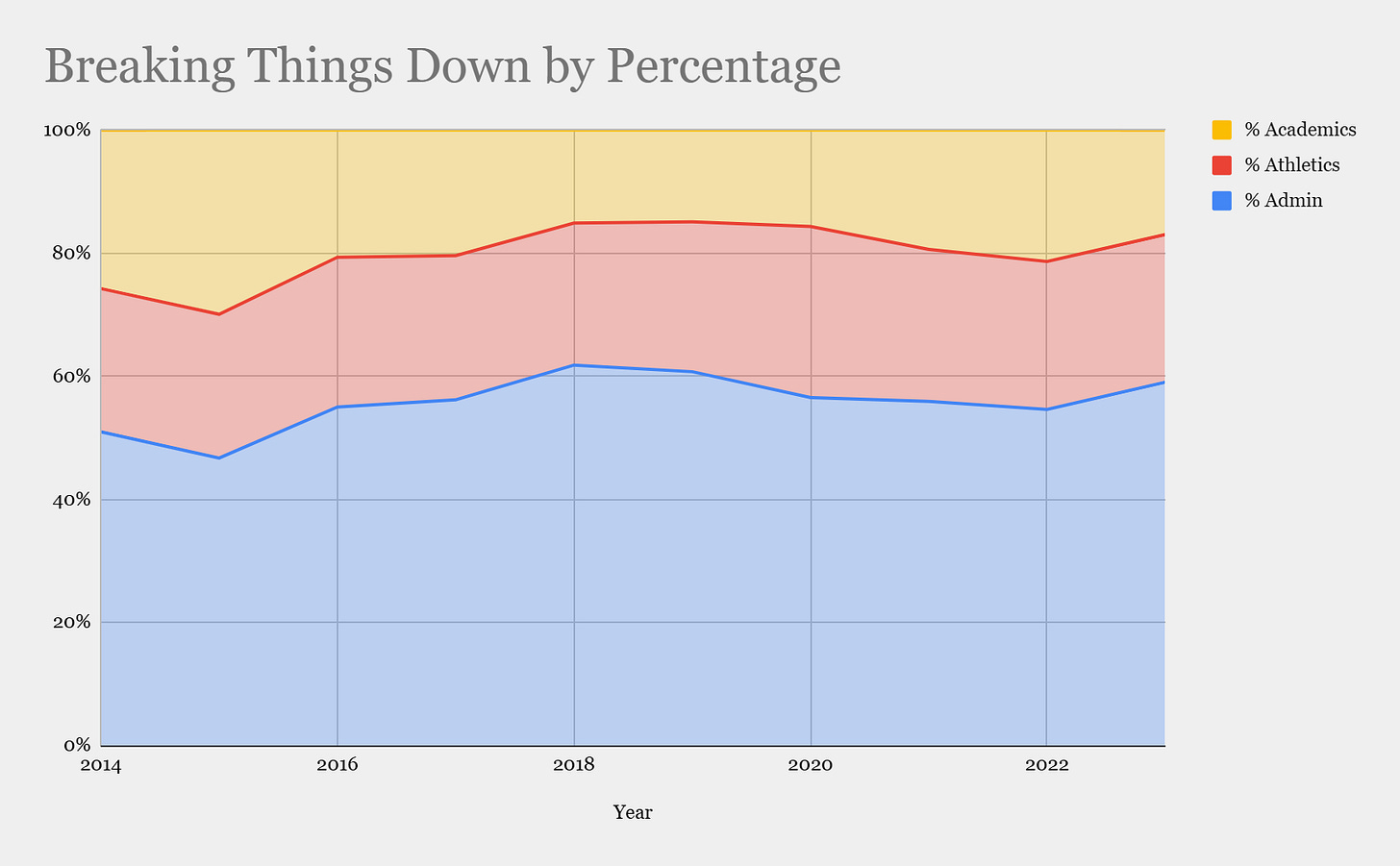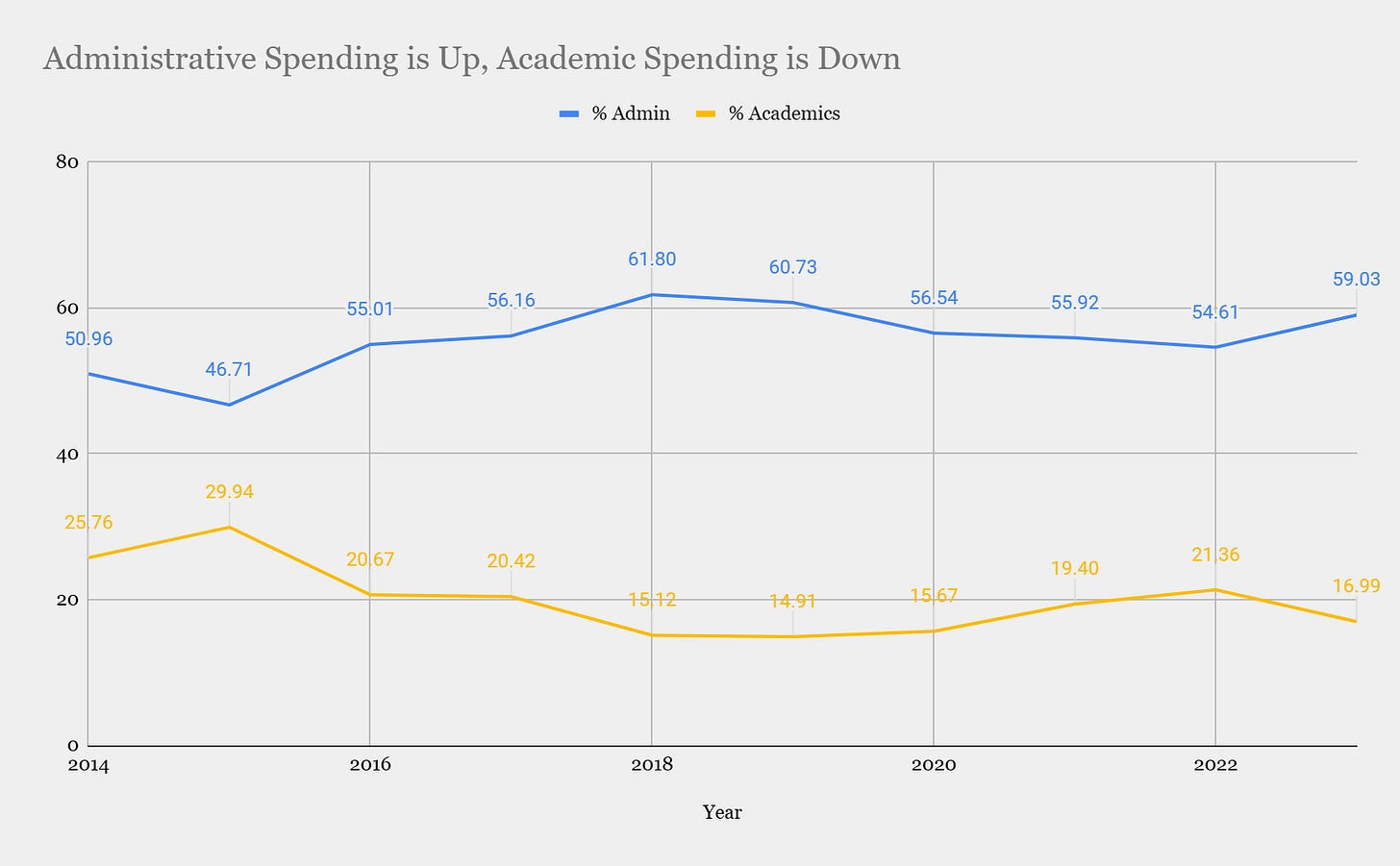Follow the Money: What Furman’s 990s Reveal
The University is suffering from a serious case of administrative bloat.
🦃 Happy Thanksgiving from FFSA
We wish you and your family safe travels, a delicious meal, and good conversation this week. To fuel that conversation — and help you steer it away from more polemical topics — we’re sharing a deep dive into what Furman’s Form 990s reveal about how our alma mater has allocated and spent money over the past decade.
📄 What Is a Form 990?
A Form 990 is an IRS tax return that virtually all private U.S. colleges and universities must file annually. Because nonprofits like Furman do not pay income tax, the Form 990 is the primary public document providing insight into the institution’s finances.
One section lists the salaries of the institution’s highest-paid employees. FFSA analyzed and organized this data from 2014 (when President Davis was hired) through 2023 (the most recent year available) to help readers understand how Furman’s compensation patterns have shifted under her tenure.
⚠️ A Necessary Disclaimer
A 990 only reports compensation for roughly the top 15–20 earners each year. It excludes the vast majority of faculty and staff, as well as many significant expenses relevant to academics and athletics. Still, the data allow us to track high-level trends in Furman’s spending priorities.
📊 What the Numbers Show
It will come as no surprise that many of the highest-paid employees are administrators or coaches — a typical pattern across American universities. But the more revealing story is how this list has changed over time.
Below are the major trends.
📈 1. Furman’s Spending on Top Employees Has Risen Nearly 70% Since 2014
U.S. inflation rose roughly 30% over the same period. Furman’s compensation for top earners has, therefore, far outpaced inflation.
Performance doesn’t fully explain the increase. In 2015, Furman ranked 51st in U.S. News. In 2023, it ranked 46th — an improvement, but not one that justifies a near doubling of top-level compensation.
So where did the additional spending go?
🧑💼 2. Most New Spending Has Flowed to Administrators
We categorized Furman’s top earners into:
Academics – professors, the dean of faculty, and provosts
Athletics – director and major coaches
Administration – President, VPs, CIO, COO, etc.
The top earners list has become increasingly dominated by administrators — both because administrative salaries have risen dramatically and because the number of administrators represented has grown.
Example:
Tom Evelyn, former VP for University Communications, earned:
$121,948 in 2016
$358,736 in 2023
Meanwhile, professors have disappeared from the top-paid list.
2015: Four professors were among the highest-paid
2023: Only one — Dr. George Shields (Chemistry)
In places where top-paid professors once appeared, we now see roles like General Counsel and Chief of Staff.
This shift strongly suggests that resources have been increasingly diverted away from academics and toward administration.
📉 3. Administrative Growth Has Come at the Direct Expense of Academics
Over the last decade, administrative spending has exploded both absolutely and as a percentage of the budget. Spending on athletics has grown but remains steady at roughly one-quarter of the budget. Meanwhile, direct expenditure on academics has been consistently squeezed.
This is the central trend our analysis uncovers.
Here you can see it even more starkly:
🧭 4. Context, Context, Context
Now, it is true that most faculty salaries are far below the 990 reporting threshold, so they don’t appear in our data. Moreover, when fewer professors break into the data due to grant slowdowns or policy changes, the “academic” percentage collapses, even if total faculty compensation at the university remains flat or rises.
And, indeed, Furman’s audited financial statements show that total instruction expense has actually risen in absolute dollars over the decade, though it has lagged endowment growth and total spending.
📊5. National Trends and Particular Examples
However, this doesn’t mean Furman doesn’t have a problem with excessive administrative spending.
The national pattern of administrative bloat is well documented (AP, US News and World Report, and Forbes).
Our data simply show that Furman is not immune to this national trend.
Moreover, anecdotes from campus indicate that this is a very real anxiety at Furman.
In 2024, The Paladin reported that faculty were informed there would be no raises for the 2024–25 academic year (except in cases of promotion).
President Davis cited rising healthcare costs, but other benefits, such as retirement contributions, have also been cut.
As Professor Brandon Inabinet put it in The Paladin, “Inflation was 4.7% in 2021, 8% in 2022, and 4.1% in 2023, while salary increases have been 4%, 4% and 0%. So, in the last couple of years, most faculty will have lost almost 10% of their livelihood.”
And just last month, Furman’s chapter of Young Democratic Socialists of America staged a walkout with “dozens of students and professors” to put pressure on the administration to raise wages for students and salaries for faculty.
These students seem to be sensing the same disparity that the data reveal: The University is increasingly spending more money on administration while tightening its budget in other areas.
This administrative bloat is causing Furman to have financial and cultural problems, and it won’t be solved until the University’s leadership makes a serious attempt to change course.






Excellent information and analysis. All professors and students should be concerned about this trend and work to reverse it.
FYI, the only reason there is any professor on the list of top earners at all is because he used to be an administrator (Provost).